Supernova Cassiopeia A



Cassiopeia A is a supernova remnant (the aftermath of an exploded star), located about 11,000 light-years or about 60 quadrillion miles away from Earth.
What is a supernova?
When giant stars run out of fuel, they collapse onto themselves and then explode outward, dispersing the shattered remains of the stars into space.
Supernovas are some of the most dramatic events in the cosmos. These titanic events send shock waves rumbling through space and create giant bubbles of gas that have been super-heated to millions of degrees.
How do we know?
Supernova remnants often glow strongly in high-energy X-rays. The Earth’s atmosphere absorbs X-rays from space, so telescopes have to be launched into orbit, above our atmosphere, to see cosmic X-rays.
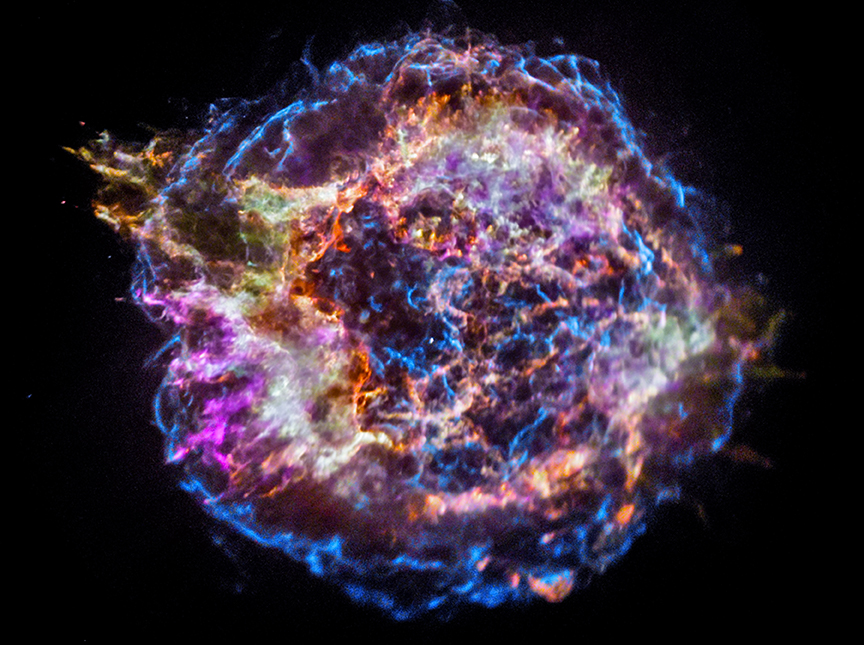
Cassiopeia A in X-ray light.
The Chandra X-ray Observatory - operated for NASA by the Smithsonian - is the most powerful X-ray telescope ever built, and it has been studying Cassiopeia A and many other fascinating objects in space for a quarter century. Chandra has captured supernovas and the remnants they've left behind in spectacular X-ray images, helping to determine the energy, composition, and dynamics of these celestial explosions.
Animation of the Chandra X-ray Observatory, tracing an elliptical orbit around Earth, taking it to one-third the distance to the moon at its farthest point.
Chandra mirrors are unique
The photons from high-energy phenomena glance off the nested mirrors like stones skipping across a pond, and are focused on the detectors at the back of the spacecraft.
Chandra's mirror technology is revolutionary
The engineering that it took to build Chandra’s mirrors was mind-blowing. Chandra’s mirrors, for example, were polished to the smoothness of a few atoms.
How it works:
Photons pass down via the mirrors and are detected by the instruments at the tail of the telescope. The data Chandra captures is sent to Earth and analyzed by image processors and scientists.
Anatomy of an exploded star
Neutron Star
At the very center of Cas A is the neutron star, the dense stellar remnant produced by the collapse of the core of the massive star.
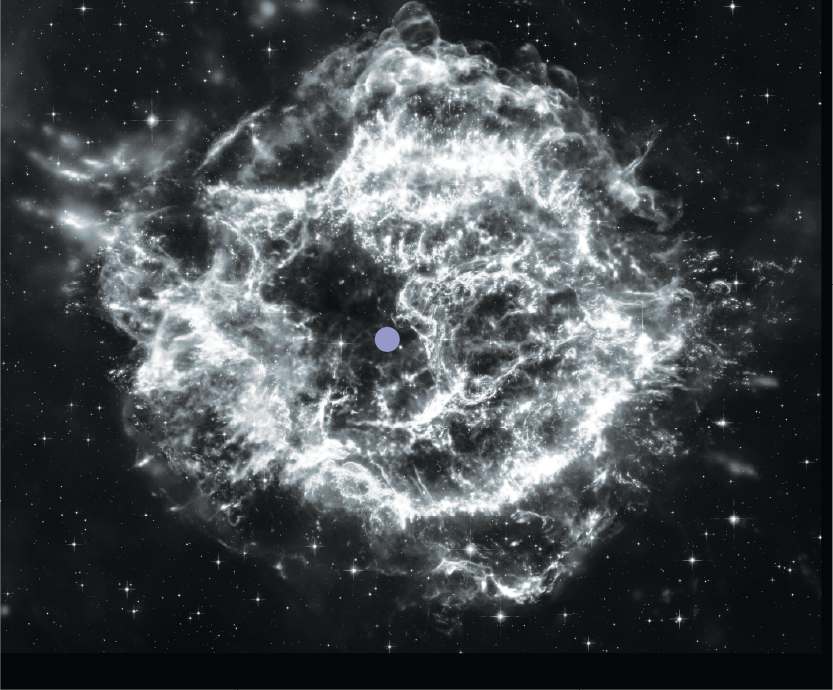
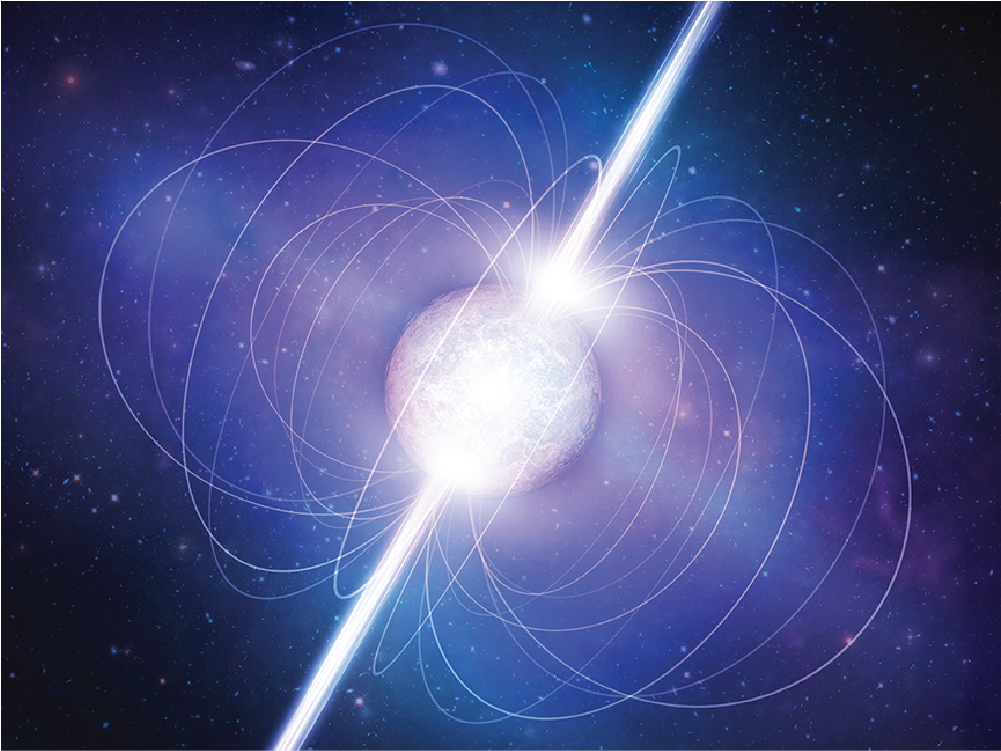
Jets
The Cas A explosion was once believed to be fairly uniform, due to our perspective from Earth and our familiarity with the 2-dimensional images. With more recent 3-dimensional data, we show evidence for 2 explosions, and an interesting phenomenon where knots of material are moving at varying speeds away from the center. Here we highlight the highest-speed motion of material in opposing jets, jutting out substantially further than the rest of the remnant.
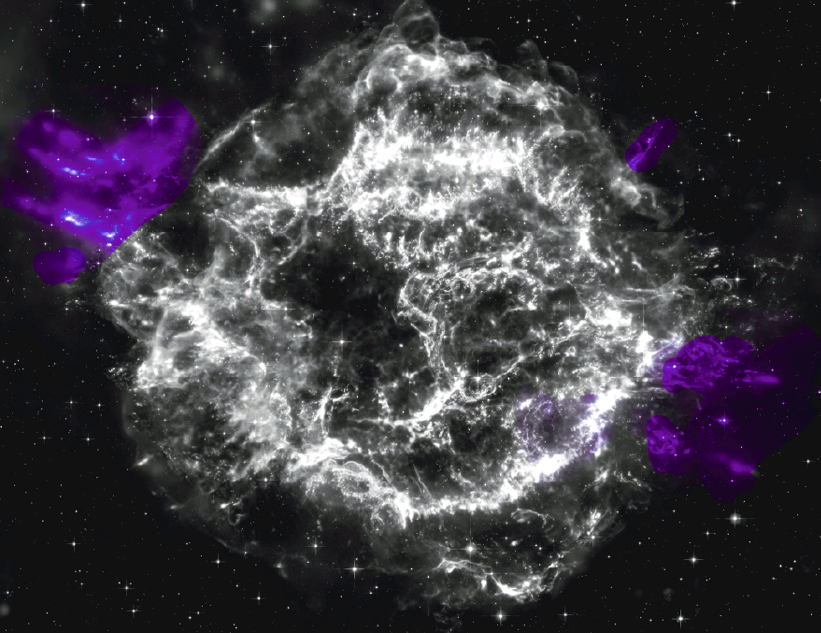
Shockwaves
Two shock waves have been detected in Cas A: a fast outer shock and a slower inner shock. The inner shock wave is believed to be due to the collision of the ejecta from the supernova explosion with a circumstellar shell of material, heating it to a temperature of ten million degrees. The outer shock wave is analogous to a sonic boom resulting from this collision.
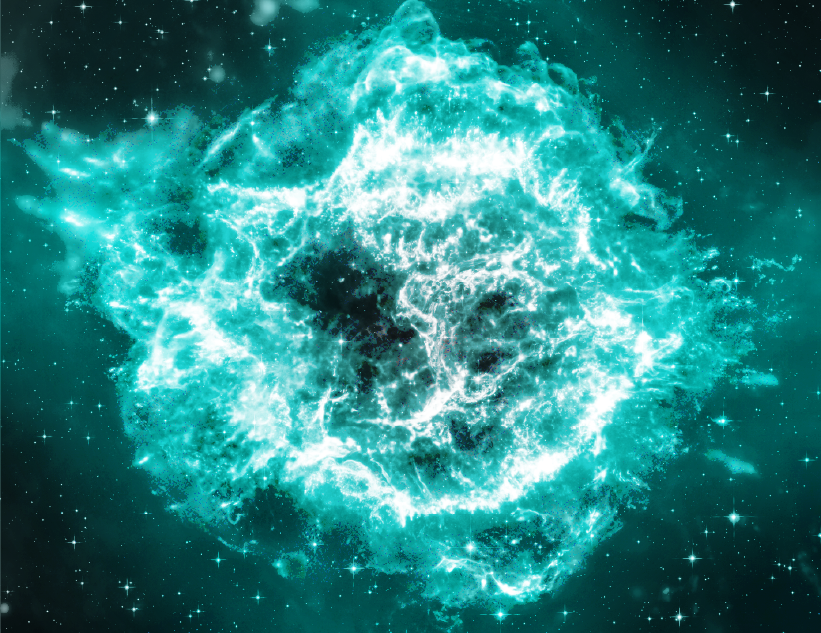
Elemental Composition
We have used spectral data to learn about the elemental composition of the remnant from Cas A’s explosion, mapping certain regions with their dominant elements. Similar materials are often clumped together in knots throughout the remnant. We will explore some of the major elements below.
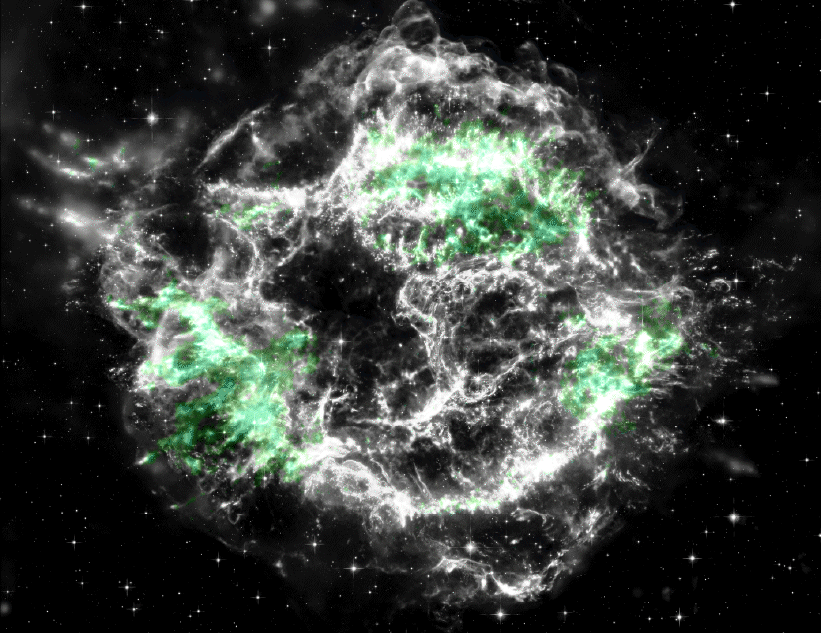
What does this tell us?
By observing Cassiopeia A and other supernova remnants, we learn about our ancient cosmic past. The early Universe was composed of Hydrogen and Helium, but heavier elements were forged within collapsing stellar interiors. A stellar explosion’s power disperses these elements. The iron in our blood, the calcium in our bones, and the oxygen we breathe come from stars that exploded long ago.
IRON (Fe)
The same element dominating this area of Cas A is also crucial for building the protein hemoglobin in our red blood cells, which carry oxygen throughout our bodies to all our cells.
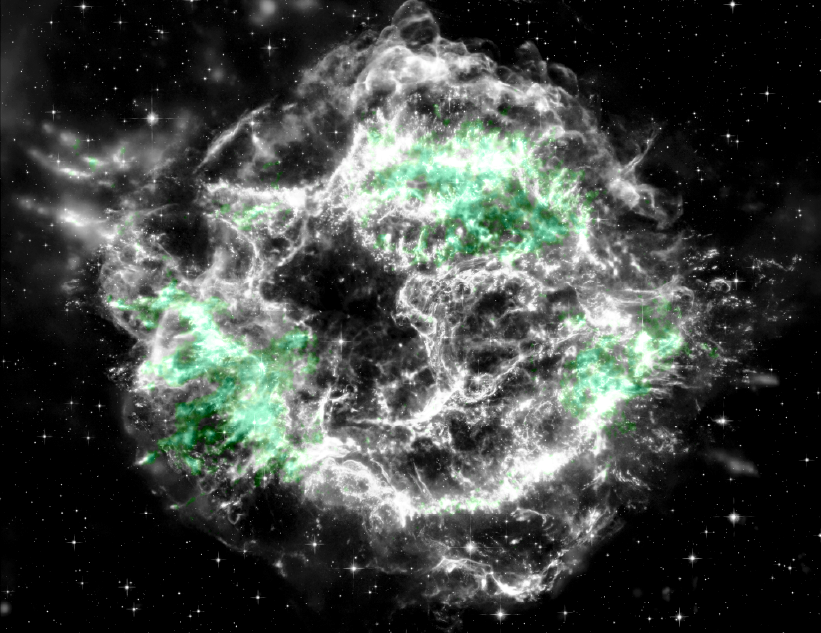
SILICON (Si)
Silicon is the second most abundant element in the Earth’s crust (after Oxygen), but exists only rarely in pure form on Earth. Nevertheless, humans use silicon for many things, including cement and other mortar materials, ceramics and glass products, and semiconductor electronics, found in computer chips and circuits. Plants use silicon for metabolic processes, and some animals secrete silicon skeletal structures.
![]()
![]()
ARGON (Ar)
Argon is the third most abundant gas in our atmosphere and the most abundant noble gas in Earth’s crust. Humans have found several uses for Argon, for example, filling the spaces between glass panes with Argon gas to help keep our homes warm or cool. We also use Argon in some light bulbs.
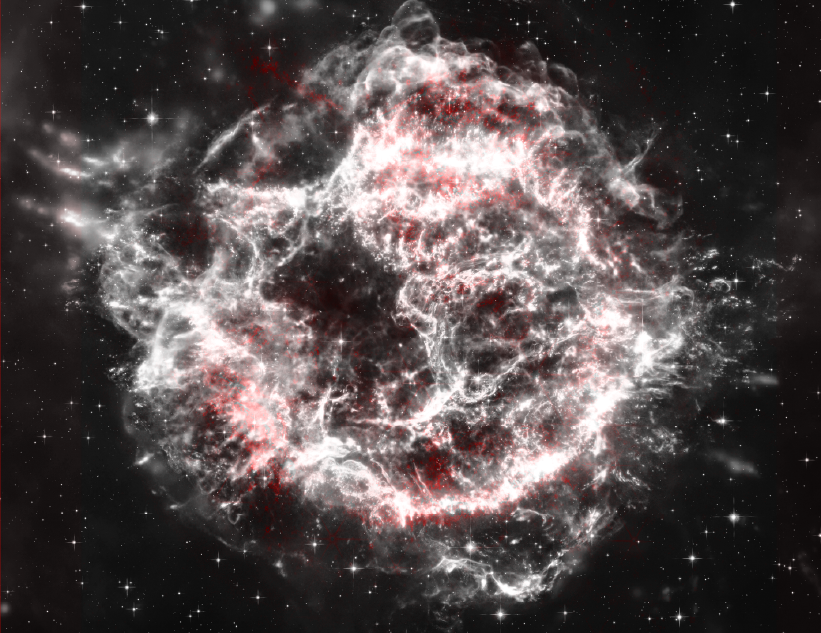
NEON (Ne)
Neon is widely recognized as the gas used in tube lighting for signs. We also use neon on Earth in TV tubes and in certain diagnostic tests involving the lungs. Neon is the fifth most abundant element in the universe, found in small amounts in Earth’s crust, air, and oceans. Jupiter also has some neon in its atmosphere. Neon is created under extreme heat and pressure conditions, where oxygen fuses with helium.
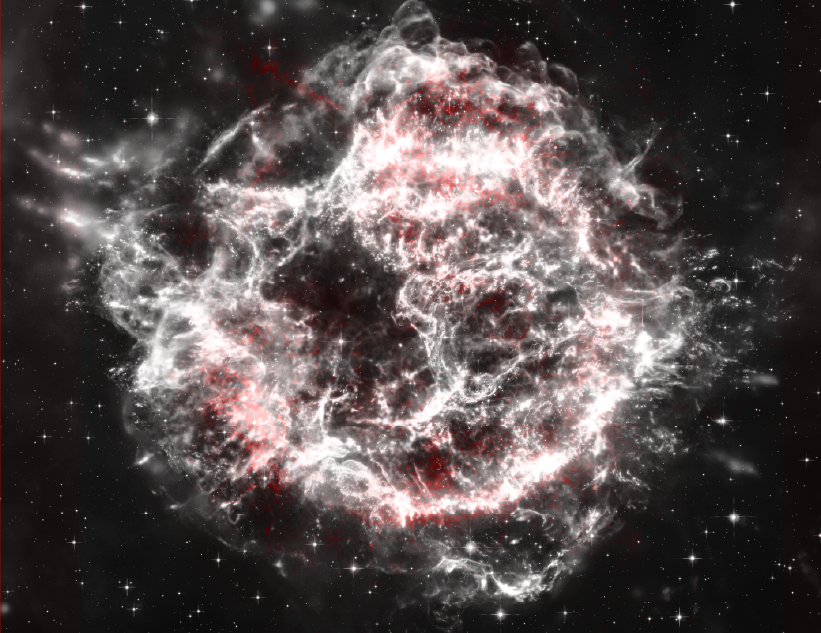
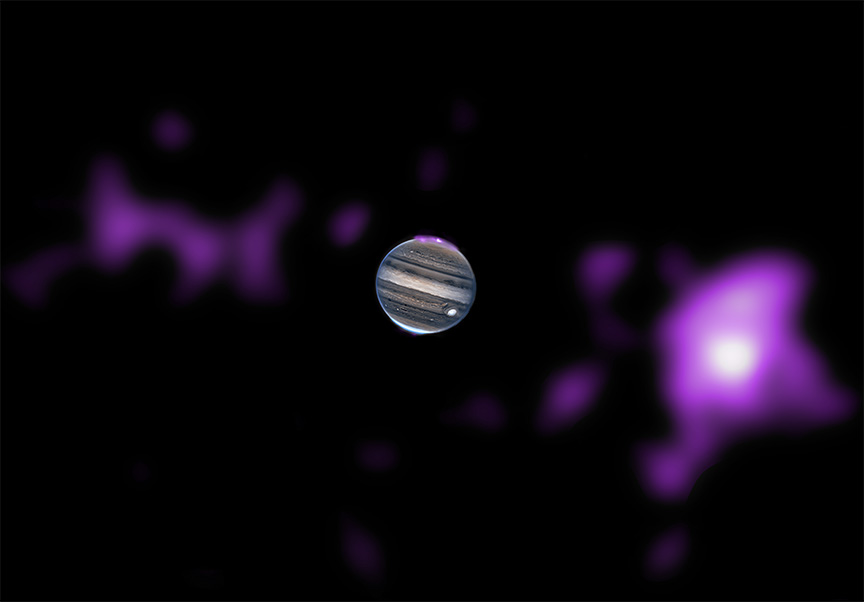
Where is Cassiopeia A?
From a beach in New England in early December, as night falls, three constellations come into view to the North. Many people can easily recognize the Big Dipper and Little Dipper. Constellation Cassiopeia A is close by, and points us to Supernova remnant Cassiopeia A.
The Earth sits in the Local Arm of the Milky Way.
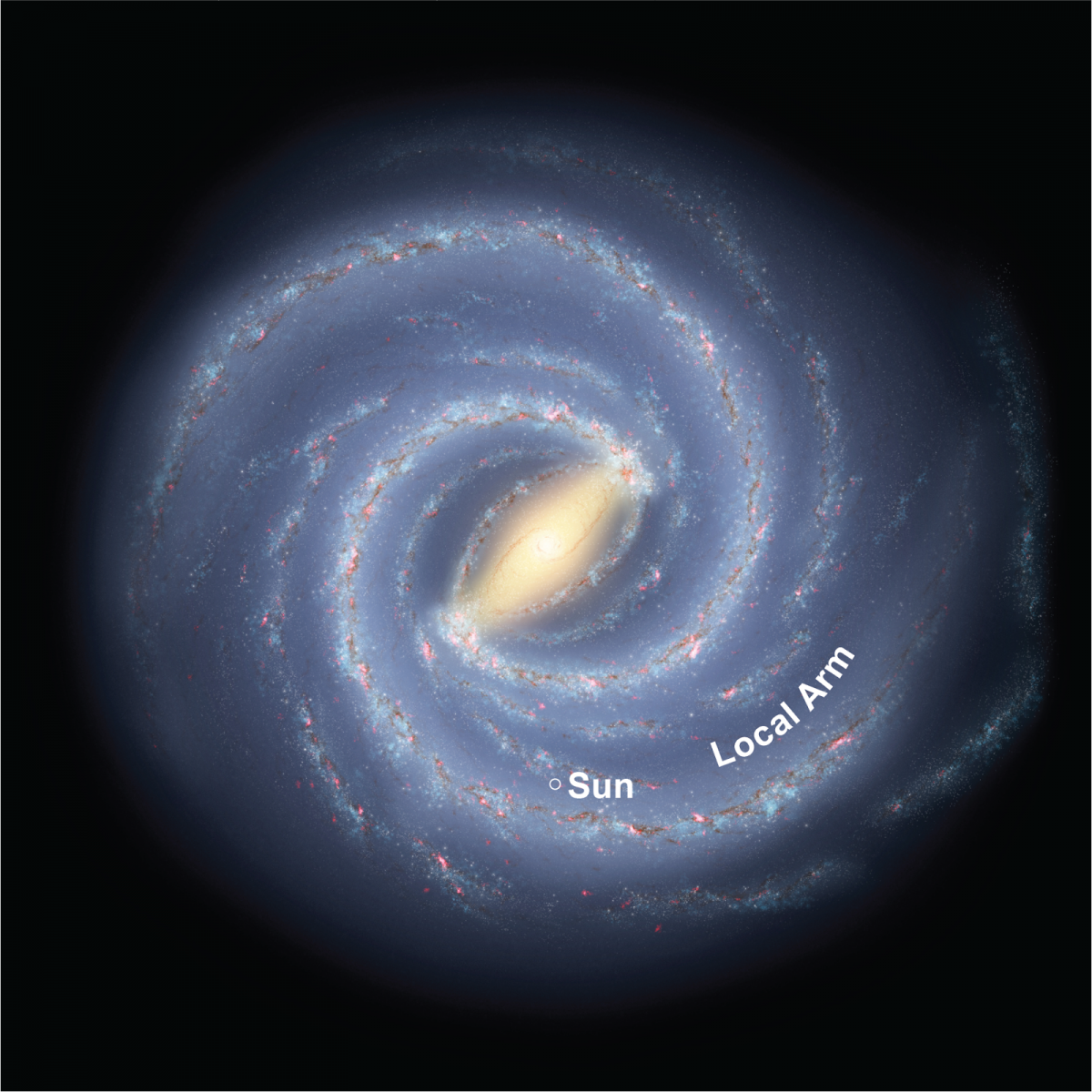
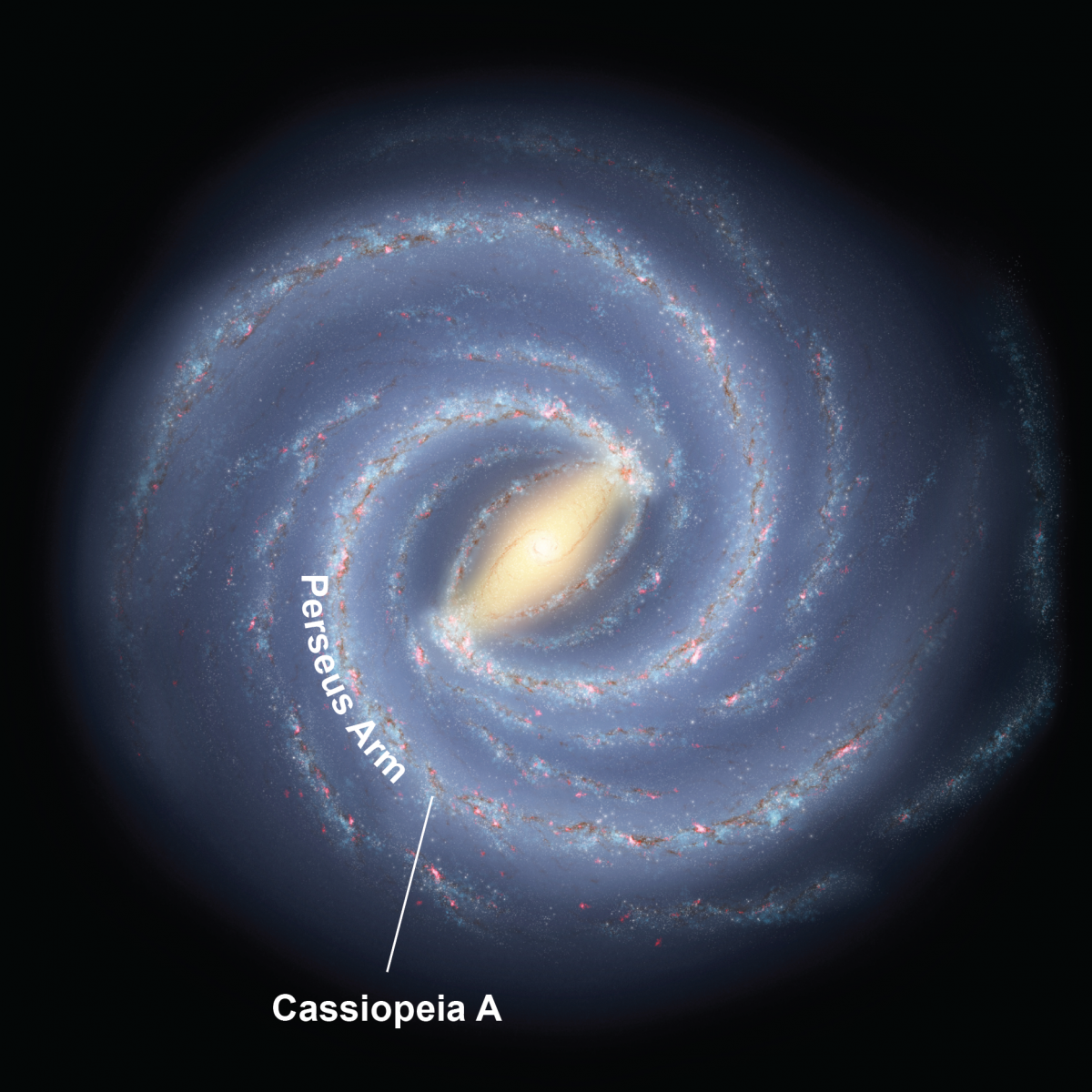
Supernova remnant Cassiopeia A sits in an adjacent arm of the Milky Way, called the Perseus Arm.
Astronomers calculate that a supernova explodes in our Milky Way galaxy every 50 years on average. However, we do not think a supernova has exploded in our Galaxy for several hundred years, meaning we’re overdue. Betelgeuse, a star in the Orion Arm of the Milky Way, is believed to be heading toward supernova some time in the next 100,000 years.
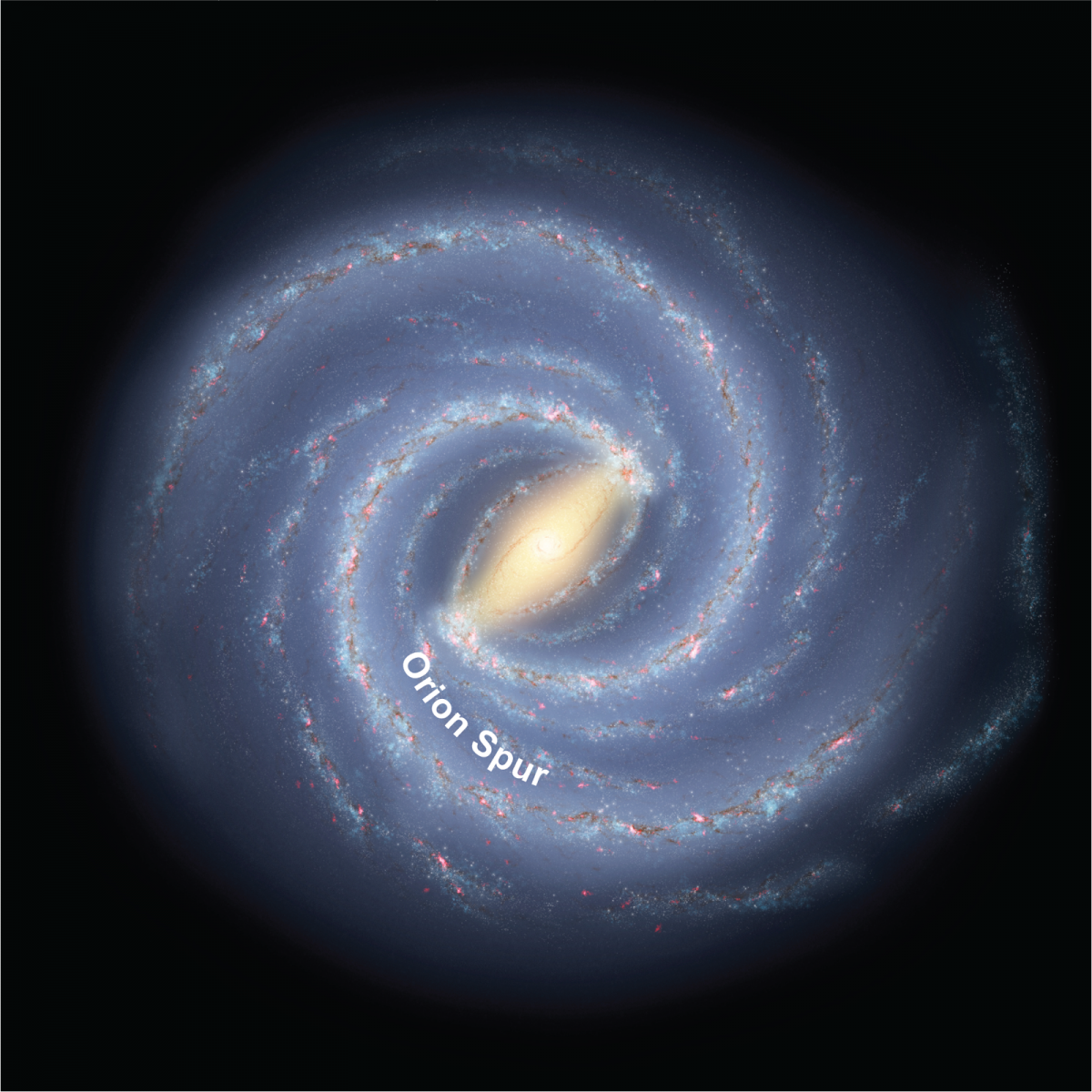
When a star blows apart in a supernova, the explosion creates multi-million-degree gas that glows in X-rays for thousands of years. Thankfully, the Earth is far away from any local star that may go supernova.
We’ve been looking at Cas A for a long time
Our Universe is dynamic: Cassiopeia A changing over time
Because NASA’s Chandra X-ray Observatory has been studying Cassiopeia A for nearly 25 years, we can watch this exploded star change over time. Even hundreds of years after the star exploded, the debris field is still expanding out into space. The outer rim shows the blast wave from the explosion.
25 years of imaging and science
Cassiopeia A First Light: August 26. 1999 - There was substantial excitement in the Chandra Operations Control Center the first time we saw Cassiopeia A in X-rays from Chandra.
These images portray so much more than what you see on the surface. There is information about energy levels, structure, or chemical composition in each of Chandra’s images which are so beautiful.
NASA’s Chandra X-ray Observatory Celebrates 25 years of studying Cassiopeia A.
Want to learn more?
We can process and share cosmic data in many ways.
Listen to the Cassiopeia A Sonification here:
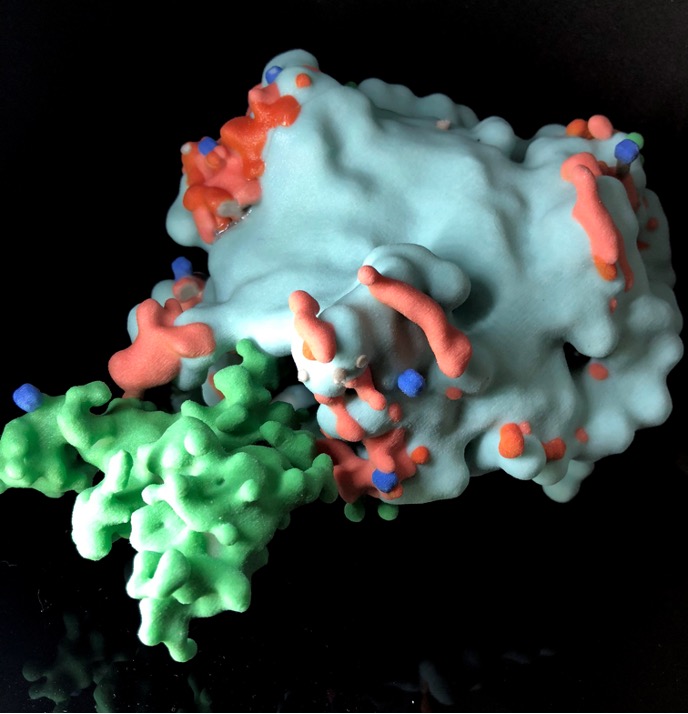
Explore (or 3D print!) the 3D model of the Cassiopeia A supernova remnant.
Read more about the Chandra X-ray Observatory here.
Credit: Images: X-ray: NASA/CXC/SAO; Optical: NASA/ESA/STScI; IR: NASA/ESA/CSA/STScI/Milisavljevic et al., NASA/JPL/CalTech; Image Processing: NASA/CXC/SAO/J. Schmidt & K. Arcand; 3D model: NASA/CXC/MIT/T.Delaney et al.; Sonification: NASA/CXC/SAO/K. Arcand, SYSTEM Sounds (M. Russo, A. Santaguida; Design: NASA/CXC/SAO/Kristin Divona; Animations/Video/3D Design/Production: NASA/CXC/SAO/April Jubett
